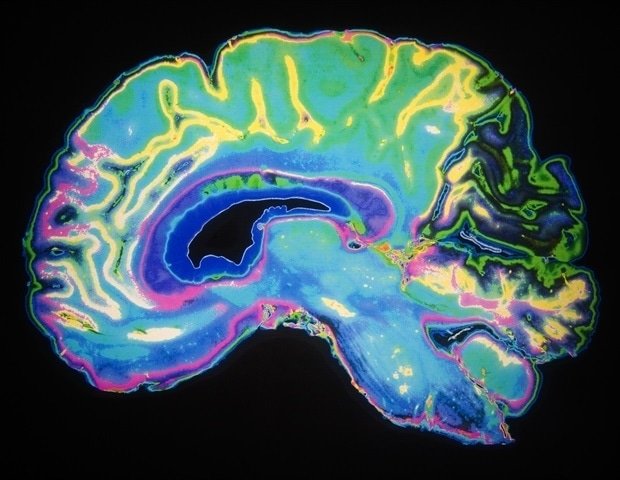Infections and neurodegenerative diseases cause inflammation in the brain. But for unknown reasons, patients with brain inflammation often develop muscle problems that appear to be independent of the central nervous system. Now, researchers at Washington University School of Medicine in St. Louis have revealed how brain inflammation releases a specific protein that travels from the brain to the muscles and causes a loss of muscle function.
The study, in fruit flies and mice, also identified ways to block this process, which could have implications for treating or preventing the muscle wasting sometimes associated with inflammatory diseases, including bacterial infections, Alzheimer’s disease and long-term COVID.
The study is published July 12 in the journal Science Immunology.
“We are interested in understanding the very profound muscle fatigue associated with some common diseases,” said senior author Aaron Johnson, PhD, associate professor of developmental biology. “Our study shows that when we get sick, messenger proteins from the brain travel through the bloodstream and reduce energy levels in skeletal muscle. This is more than a lack of motivation because we don’t feel well. These processes reduce energy levels in skeletal muscles. skeletal muscles, reducing the ability to move and function normally.
To investigate the effects of brain inflammation on muscle function, the researchers modeled three different types of disease -? one E. coli bacterial infection, SARS-CoV-2 viral infection and Alzheimer’s. When the brain is exposed to inflammatory proteins characteristic of these diseases, harmful chemicals called reactive oxygen species build up. Reactive oxygen species cause brain cells to produce an immune-related molecule called interleukin-6 (IL-6), which travels throughout the body via the bloodstream. The researchers found that IL-6 in mice -? and the corresponding protein in fruit flies -? reduced energy production in muscle mitochondria, the cells’ energy factories.
“Flies and mice that had proteins associated with COVID in the brain showed reduced motor function — the flies didn’t climb as well as they should, and the mice didn’t run as well or as well as the control mice,” Johnson said.
We saw similar effects on muscle function when the brain was exposed to proteins associated with bacteria and Alzheimer’s beta amyloid protein. We also see evidence that this effect can become chronic. Even if an infection clears up quickly, reduced muscle performance persists for several days longer in our experiments.”
Aaron Johnson, Associate Professor, Developmental Biology, Washington University School of Medicine
Johnson, along with colleagues at the University of Florida and first author Shuo Yang, PhD -; who did this work as a postdoctoral researcher in Johnson’s lab -? ensure that the same processes are probably relevant to humans. The bacterial brain infection meningitis is known to increase IL-6 levels and can be associated with muscle problems in some patients, for example. Among patients with COVID-19, SARS-CoV-2 inflammatory proteins have been found in the brain at autopsy, and many patients with chronic COVID-19 report extreme fatigue and muscle weakness even long after the initial infection has cleared. Alzheimer’s disease patients also show increased levels of IL-6 in the blood as well as muscle weakness.
The study points to potential targets for preventing or treating muscle weakness associated with brain inflammation. The researchers found that IL-6 activates what’s called the JAK-STAT pathway in muscle, and that’s what causes the mitochondria’s reduced energy production. Several treatments already approved by the Food and Drug Administration for other diseases can block this pathway. JAK inhibitors as well as several anti-IL-6 monoclonal antibodies are approved for the treatment of various types of arthritis and the management of other inflammatory conditions.
“We’re not sure why the brain produces a protein signal that is so detrimental to muscle function in so many different classes of diseases,” Johnson said. “If we want to speculate on possible reasons that this process has stayed with us throughout human evolution, despite the damage it causes, it could be a way for the brain to reallocate resources to itself as it fights disease. We need more research to better understand this process and its consequences throughout the body.
“In the meantime, we hope our study will encourage more clinical research into this pathway and whether existing treatments that block different parts of it can help the many patients who experience this type of debilitating muscle fatigue,” he said.
Yang S, Tian M, Dai Y, Wang R, Yamada S, Feng S, Wang Y, Chhangani D, Ou T, Li W, Guo X, McAdow J, Rincon-Limas DE, Yin X, Tai W, Cheng G, Johnson A. Infection and chronic disease activate a systemic brain-muscle signaling axis that regulates muscle function. Science Immunology. July 12, 2024.
Source:
Journal References:
Yang, S., et al. (2024) Infection and chronic disease activate a systemic brain-muscle signaling axis. Science Immunology. doi.org/10.1126/sciimmunol.adm7908.
